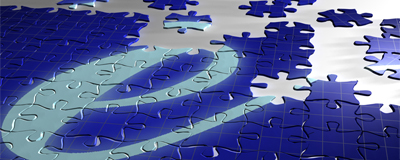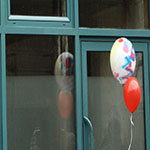Euroacademia Conferences
 Europe Inside-Out: Europe and Europeanness Exposed to Plural Observers (9th Edition) April 24 - 25, 2020
Europe Inside-Out: Europe and Europeanness Exposed to Plural Observers (9th Edition) April 24 - 25, 2020 Identities and Identifications: Politicized Uses of Collective Identities (9th Edition) June 12 - 13, 2020
Identities and Identifications: Politicized Uses of Collective Identities (9th Edition) June 12 - 13, 2020 8th Forum of Critical Studies: Asking Big Questions Again January 24 - 25, 2020
8th Forum of Critical Studies: Asking Big Questions Again January 24 - 25, 2020 Re-Inventing Eastern Europe (7th Edition) December 13 - 14, 2019
Re-Inventing Eastern Europe (7th Edition) December 13 - 14, 2019 The European Union and the Politicization of Europe (8th Edition) October 25 - 26, 2019
The European Union and the Politicization of Europe (8th Edition) October 25 - 26, 2019 Identities and Identifications: Politicized Uses of Collective Identities (8th Edition) June 28 - 29, 2019
Identities and Identifications: Politicized Uses of Collective Identities (8th Edition) June 28 - 29, 2019 The European Union and the Politicization of Europe (7th Edition) January 25 - 26, 2019
The European Union and the Politicization of Europe (7th Edition) January 25 - 26, 2019 7th Forum of Critical Studies: Asking Big Questions Again November 23 - 24, 2018
7th Forum of Critical Studies: Asking Big Questions Again November 23 - 24, 2018 Europe Inside-Out: Europe and Europeanness Exposed to Plural Observers (8th Edition) September 28 - 30, 2018
Europe Inside-Out: Europe and Europeanness Exposed to Plural Observers (8th Edition) September 28 - 30, 2018 Identities and Identifications: Politicized Uses of Collective Identities (7th Edition) June 14 - 15, 2018
Identities and Identifications: Politicized Uses of Collective Identities (7th Edition) June 14 - 15, 2018
The Role of Art in Diplomacy and State’s International Representation in Latvia (1918–1940)
-
-

-
Presentation speakers
- Ginta Gerharde-Upeniece, Latvian National Museum of Art, Latvia
Abstract:
Since the restoration of independence in 1991, the history of Latvia is considered to be a continuation of the period of the first period independence (1918-1940) with its achievements and failures in politics, economics and culture. This aim of this presentation is to assess the idea of continuity of cultural (art) institutions and the representation of art abroad.
In the historical development in the territory populated by Latvians, in which the dominant condition was the repeated shifts of foreign powers, the formation of the state (on November 18th, 1918) was a significant turning point in each of the areas – politics, economics, social and cultural fields. Collaboration of the Ministry of Foreign Affairs of Latvia with culture institutions, activities of artists in the ranks of the diplomatic service, the significance of individuals and professionalism in representing art on a national level is reflected. Latvian embassies and consulates opened abroad gave socially active persons an opportunity to join the diplomatic service. Recognized artists have worked in diplomacy.
Latvian art had gained new, internationally recognized quality in exhibitions abroad in the 1930s. The high artistic level effectively became a joint success of the state’s foreign policy and culture. .In the dialogue between art and diplomacy the representatives of the Embassies – diplomats Oļģerds Grosvalds, Kārlis Zariņš, Alfreds Bīlmanis, etc., played an exceptionally important part together with countless helpers in the preparation of the events.
Latvia’s diplomatic service is the only institution that has worked uninterruptedly since the founding of the state in 1918. Persistence of this service is a real testimony of the continuity of Latvia and its international recognition. Considering the long period of interruption (1940-1991) brought by two occupations, cultural continuity will be secured if, confrontation aside, intellectual, creative resources are invested in this process. -


















